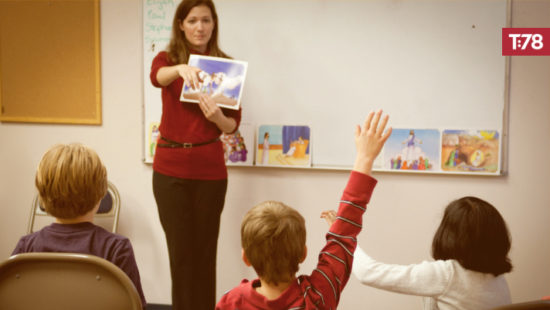One of the God-given means for influencing the heart and the will is to encourage students to be active participants in the learning process. Most people would agree that active participation by students creates a positive learning experience. Most of us could even give reasons why this is so:
- Participation makes the lessons more interesting, aids in holding the attention of potential wandering minds, and minimizes boredom.
- Involvement maximizes the possibility that concepts are retained over a longer period of time.
- Discovering truth rather than just hearing it provides a greater potential for truths to be internalized. The critical thinking skills involved in discovery can not only inform the mind, but also offer a more profound impression on the heart.
Though there may be agreement on these reasons, the challenge remains in how to get children involved in the most effective heart-changing ways. Often teachers confuse “activity” with “active learning.” Regrettably, providing opportunities for hands-on activity can become an end in itself. The result may be that the child had a lot of fun but the experience was very time consuming, and while some of the subject matter was absorbed, very little real learning occurred. Active learning on the other hand involves an intentional engagement of the mind; the mind is active, not necessarily the body though both could coincide. Including children in the process of learning by getting up and writing on the board, participating in role plays and demonstrations, putting together visuals—being active while they learn—is often very helpful, especially with younger children.
However, active learning goes beyond activity. Active learning involves children’s minds interacting with the subject matter. They are thinking—discovering, imagining, questioning, organizing, analyzing, evaluating, drawing conclusions, and applying the material.
If we merely require children to listen while we tell them what to believe, they may not be comprehending, agreeing with, or internalizing the truth; and the same may be just as true if we ask them to act out a Bible story, retell a story, or recite a Bible verse. How then do we get them to ponder, evaluate, connect, and be impacted by truth?
One means of effective active learning is to encourage children to look at a text in the Bible; carefully observe and rightly interpret the text; make real application of that truth to their own lives; and eventually respond in faith to that truth: to embrace it, own it, live by it—and be willing to die for it.
When children are little, we must tell them much of what they need to learn. They are eager little sponges soaking up knowledge wherever they find it. This is the beginning of the active learning process. Children need to accumulate a storehouse of information in order to eventually interact on a deeper level, making connections, seeking answers to more complex issues, reasoning out solutions, and formulating arguments. By fifth grade, when they can begin to think logically, teachers need to be dialoguing with children, asking thought-provoking questions, and expecting thoughtful, reasoned answers.
By leading children and youth logically through a series of questions designed to point them to correct conclusions, we are encouraging them to discover what God actually says in His Word. Our questions should teach them to observe, interpret, and apply the truth. The mind then becomes a conduit for the truth to reach the heart. God has given mankind amazing mental capacities which can be used to impact the affections of the heart. We should encourage children to exercise their minds for the purpose of knowing God and His Word. This does not diminish the work of the Holy Spirit in drawing a child into a response of faith, but rather is a means of cooperating with His supernatural work.







